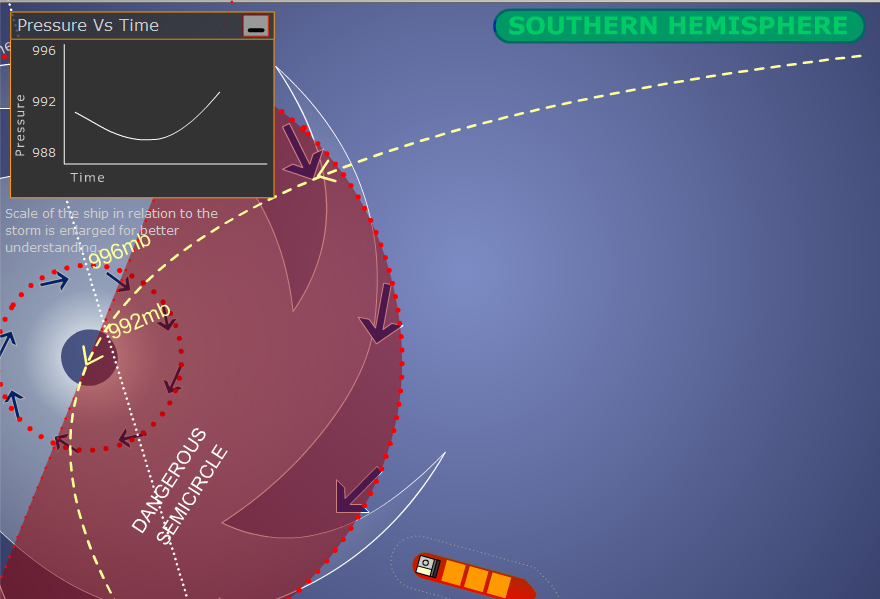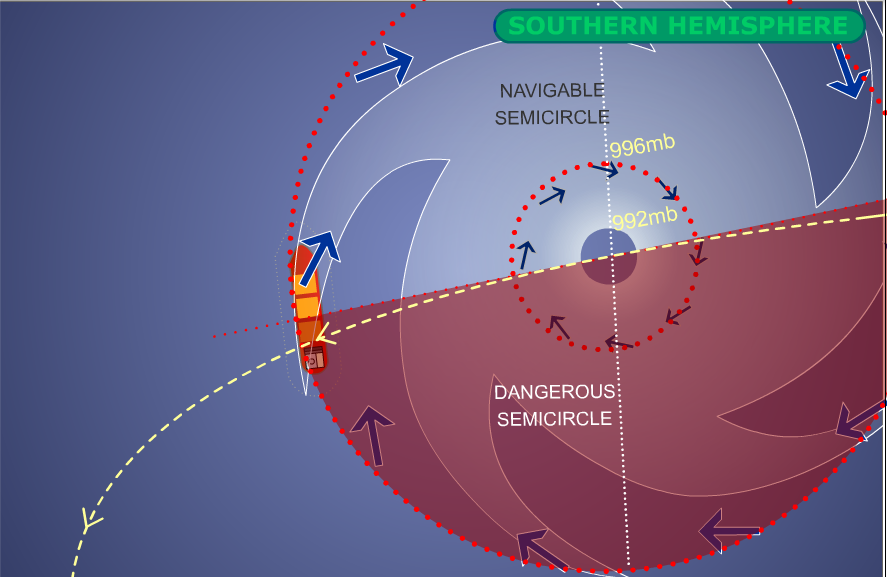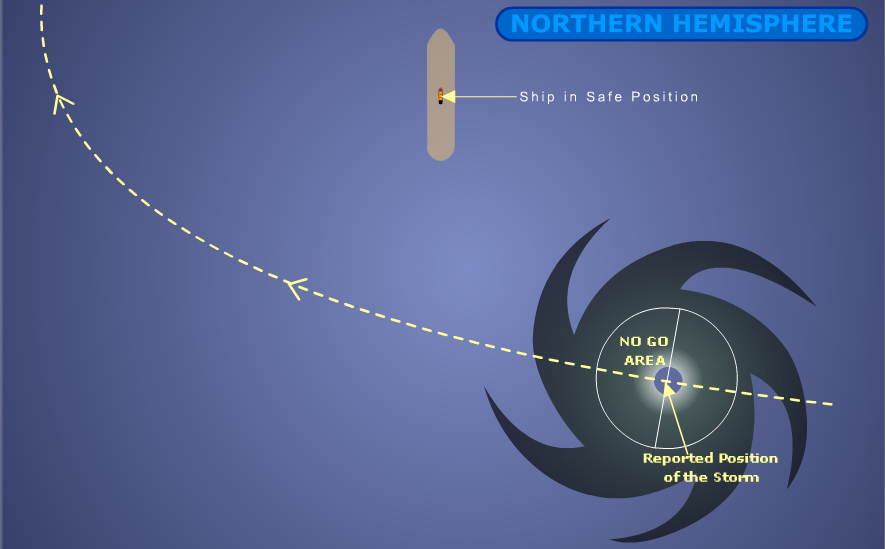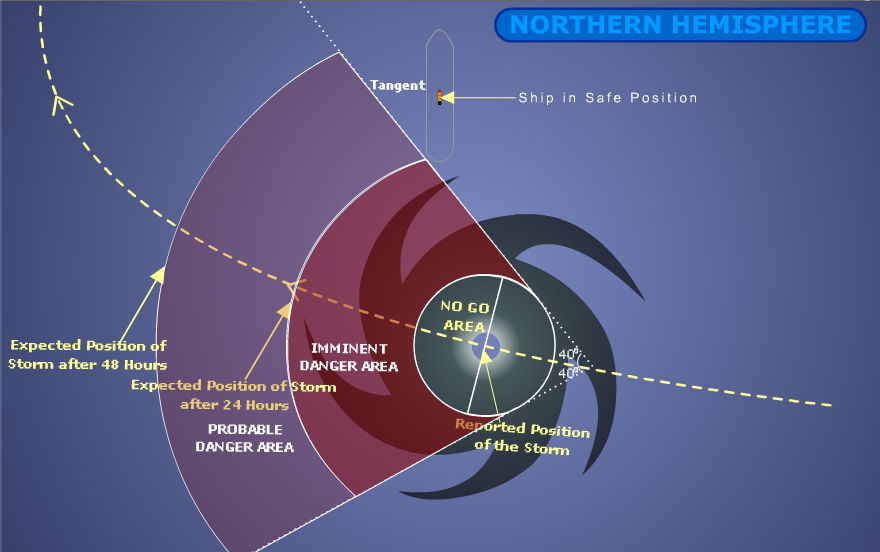Finding the Quadrant – Northern Hemisphere

Northern Hemisphere
If the wind veers she is in the right hand semicircle (Dangerous Semicircle)
If the wind backs she is in the left hand semicircle (Navigable semicircle)
Navigable Semicircle

Northern Hemisphere
Proceed at maximum practical speed, alter courses as wind backs, keeping the wind between 1 and 4 points on the starboard quarter.

Dangerous Semicircle

Northern Hemisphere
Proceed at maximum practical speed, alter course as wind veers, keeping the wind between 1 and 4 points on the starboard bow.

In Direct Path

Northern Hemisphere
Keep wind on starboard quarter and make all possible speed to navigable semicircle

Vessel overtaking storm
Northern Hemisphere
Heave to, keep the wind on starboard bow, storm will clear.

Finding the quadrant – Southern Hemisphere

If the wind backs she is in the right hand semicircle (Navigable Semicircle)
If the wind veers she is in the left hand semicircle (Dangerous Semicircle)
Navigable Semicircle

Navigable Semicircle – Southern Hemisphere
Proceed at maximum practical speed, alter course as wind veers, keeping the wind between 1 and 4 points on the port quarter.

Dangerous Semicircle

Dangerous Semicircle – Southern Hemisphere
Proceed at maximum practical speed, alter course as wind backs, keeping the wind between 1 and 4 points on the port bow.

In the direct path – Southern Hemisphere

Proceed at maximum practical speed, alter course as wind veers, keeping the wind between 1 and 4 points on the port quarter.

Vessel overtaking storm – Southern Hemisphere

Heave to, keep the wind on port bow, storm will clear.

Safety Sector
The Fan diagram

-Plot the reported position of the storm
-Draw a circle of radius of 75 miles about the storm centre

-Draw a sector of 80degrees , by drawing 40degree lines on either side at the storms current position
-Draw tangential lines to the circle parallel to the 40degree sector lines.
-Mark the distance the storm will travel for 24 and 48hours along its predicted path, from its current position.
-Complete the fan.

-Mark the no-go, imminent and probable danger areas.

-Amend the fan with each new position and predicted path of the storm.


